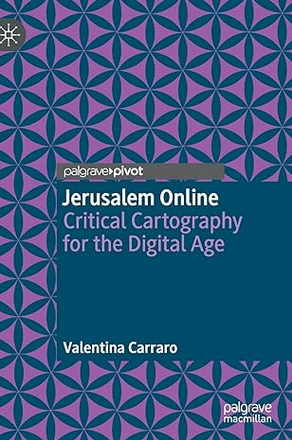 Twenty years… A seemingly big, very round number, at least for me. I can recall several very well-known songs mentioning this timespan: «It was twenty years ago today Sgt. Pepper taught the band to play», sang four youth idols in 1967 for whom said timespan was not-quite-but-almost their full lifes so far. «Si las cosas que uno quiere se pudieran alcanzar, tú me quisieras lo mismo que veinte años atrás» (if what one wants could be achieved, you would love me the same as twenty years ago), says a heartbroken song by María Teresa Vera where she is resigned not...
Twenty years… A seemingly big, very round number, at least for me. I can recall several very well-known songs mentioning this timespan: «It was twenty years ago today Sgt. Pepper taught the band to play», sang four youth idols in 1967 for whom said timespan was not-quite-but-almost their full lifes so far. «Si las cosas que uno quiere se pudieran alcanzar, tú me quisieras lo mismo que veinte años atrás» (if what one wants could be achieved, you would love me the same as twenty years ago), says a heartbroken song by María Teresa Vera where she is resigned not...Gunnar Wolf - Nice grey life - page 7
Showing posts 61 – 70
 Twenty years… A seemingly big, very round number, at least for me. I can recall several very well-known songs mentioning this timespan: «It was twenty years ago today Sgt. Pepper taught the band to play», sang four youth idols in 1967 for whom said timespan was not-quite-but-almost their full lifes so far. «Si las cosas que uno quiere se pudieran alcanzar, tú me quisieras lo mismo que veinte años atrás» (if what one wants could be achieved, you would love me the same as twenty years ago), says a heartbroken song by María Teresa Vera where she is resigned not...
Twenty years… A seemingly big, very round number, at least for me. I can recall several very well-known songs mentioning this timespan: «It was twenty years ago today Sgt. Pepper taught the band to play», sang four youth idols in 1967 for whom said timespan was not-quite-but-almost their full lifes so far. «Si las cosas que uno quiere se pudieran alcanzar, tú me quisieras lo mismo que veinte años atrás» (if what one wants could be achieved, you would love me the same as twenty years ago), says a heartbroken song by María Teresa Vera where she is resigned not... Phew! Today, after four days of combing through code I am unfamiliar with, I was finally able to change my expression. I’m finally at the part of my PhD work where I am tasked with implementing the protocol I claim improves from the current situation. I wrote a script to deploy the infrastructure I need for the experiment, and was not expecting any issues — I am not (yet) familiar with the Go language (in which the Hockeypuck key server is developed), but I have managed to install it several times, and it holds no terrible surprises anymore for me....
Phew! Today, after four days of combing through code I am unfamiliar with, I was finally able to change my expression. I’m finally at the part of my PhD work where I am tasked with implementing the protocol I claim improves from the current situation. I wrote a script to deploy the infrastructure I need for the experiment, and was not expecting any issues — I am not (yet) familiar with the Go language (in which the Hockeypuck key server is developed), but I have managed to install it several times, and it holds no terrible surprises anymore for me.... After my last post, Bálint (who prompted it with his last post) suggested I should do a hybrid test of his tests and my extremes. He suggested I should build the Linux kernel using my Raspberry Pi 4 (8GB model), but using the Firebuild build accelerator. Before going any further: I must make clear that while Firebuild is freely redistributable, it is not made available under a free license. It is free for personal use or commercial trial, but otherwise requires licensing. Bálint managed to build a Linux kernel in just over 8 seconds. So, how did my test go?...
After my last post, Bálint (who prompted it with his last post) suggested I should do a hybrid test of his tests and my extremes. He suggested I should build the Linux kernel using my Raspberry Pi 4 (8GB model), but using the Firebuild build accelerator. Before going any further: I must make clear that while Firebuild is freely redistributable, it is not made available under a free license. It is free for personal use or commercial trial, but otherwise requires licensing. Bálint managed to build a Linux kernel in just over 8 seconds. So, how did my test go?... Given that Bálint just braggedblogged about how efficiently he can build a Linux kernel (less than 8 seconds, wow! Well, yes, until you read it is the result of aggressive caching and is achieved only for a second run), and that a question just popped up today on the Debian ARM mailing list, «is an ARM computer a good choice? Which one?», I decided to share my results of an experiment I did several months ago, to graphically show to my students the effects of parallelism, the artifacts of hyperthreading, the effects of different architecture sets, and even illustrate about...
Given that Bálint just braggedblogged about how efficiently he can build a Linux kernel (less than 8 seconds, wow! Well, yes, until you read it is the result of aggressive caching and is achieved only for a second run), and that a question just popped up today on the Debian ARM mailing list, «is an ARM computer a good choice? Which one?», I decided to share my results of an experiment I did several months ago, to graphically show to my students the effects of parallelism, the artifacts of hyperthreading, the effects of different architecture sets, and even illustrate about... While cartography studies the making and using of maps, this book focuses on a specific case study of critical cartography, that is, when power relations and differing understandings of reality and politics change or shape the making of maps for a given location or community. The case of study looked at here is one of the world’s most contested and historical cities: Jerusalem. The author presents the power struggle in Jerusalem, taking a clear stand as a sympathizer of the Palestinian side–a view that shapes the whole book. She starts by explaining how cartography has been used as a means...
While cartography studies the making and using of maps, this book focuses on a specific case study of critical cartography, that is, when power relations and differing understandings of reality and politics change or shape the making of maps for a given location or community. The case of study looked at here is one of the world’s most contested and historical cities: Jerusalem. The author presents the power struggle in Jerusalem, taking a clear stand as a sympathizer of the Palestinian side–a view that shapes the whole book. She starts by explaining how cartography has been used as a means... I have mentioned several times in this blog, as well as by other communication means, that I am very happy with the laptop I bought (used) about a year and a half ago: an ARM-based Lenovo Yoga C630. Yes, I knew from the very beginning that using this laptop would pose a challenge to me in many ways, as full hardware support for ARM laptops are nowhere as easy as for plain boring x86 systems. But the advantages far outweigh the inconvenience (i.e. the hoops I had to jump through to handle video-out when I started teaching presentially, which are...
I have mentioned several times in this blog, as well as by other communication means, that I am very happy with the laptop I bought (used) about a year and a half ago: an ARM-based Lenovo Yoga C630. Yes, I knew from the very beginning that using this laptop would pose a challenge to me in many ways, as full hardware support for ARM laptops are nowhere as easy as for plain boring x86 systems. But the advantages far outweigh the inconvenience (i.e. the hoops I had to jump through to handle video-out when I started teaching presentially, which are... Greetings from Viluppuram, Tamil Nadu, South India! As a preparation and warm-up for DebConf in September, the Debian people in India have organized a miniDebConf. Well, I don’t want to be unfair to them — They have been regularly organizing miniDebConfs for over a decade, and while most of the attendees are students local to this state in South India (the very ``tip’’ of the country; Tamil Nadu is the Eastern side, and Kerala, where Kochi is and DebConf will be held, is the Western side), I have talked with attendees from very different regions of this country. This miniDebConf...
Greetings from Viluppuram, Tamil Nadu, South India! As a preparation and warm-up for DebConf in September, the Debian people in India have organized a miniDebConf. Well, I don’t want to be unfair to them — They have been regularly organizing miniDebConfs for over a decade, and while most of the attendees are students local to this state in South India (the very ``tip’’ of the country; Tamil Nadu is the Eastern side, and Kerala, where Kochi is and DebConf will be held, is the Western side), I have talked with attendees from very different regions of this country. This miniDebConf... As many of you know, I work at UNAM, Mexico’s largest university. My work is split in two parts: My “full-time” job is to be the systems and network administrator at the Economics Research Institute, and I do some hours of teaching at the Engineering Faculty. At the Institute, my role is academic — but although I have tried to frame my works in a way amenable to analysis grounded on the Social Sciences (Construcción Colaborativa del Conocimiento, Hecho con Creative Commons, Mecanismos de privacidad y anonimato), so far, I have not taken part of academic collaboration with my coworkers...
As many of you know, I work at UNAM, Mexico’s largest university. My work is split in two parts: My “full-time” job is to be the systems and network administrator at the Economics Research Institute, and I do some hours of teaching at the Engineering Faculty. At the Institute, my role is academic — but although I have tried to frame my works in a way amenable to analysis grounded on the Social Sciences (Construcción Colaborativa del Conocimiento, Hecho con Creative Commons, Mecanismos de privacidad y anonimato), so far, I have not taken part of academic collaboration with my coworkers... It is not far-fetched to say that most (if not all) CR readers have been subjected to some sort of phishing attack–and even more likely if we consider the wide taxonomy of activities that Sonowal’s book covers. Can we as individuals identify them before falling prey? Can we as systems administrators detect them before our users are delivered potentially harmful content? Can we as application programmers write secure code that thwarts the most common attacks? Are there nontechnical resources that can be applied to combat phishing? And, above all, what is phishing? It is a generic term that can be...
It is not far-fetched to say that most (if not all) CR readers have been subjected to some sort of phishing attack–and even more likely if we consider the wide taxonomy of activities that Sonowal’s book covers. Can we as individuals identify them before falling prey? Can we as systems administrators detect them before our users are delivered potentially harmful content? Can we as application programmers write secure code that thwarts the most common attacks? Are there nontechnical resources that can be applied to combat phishing? And, above all, what is phishing? It is a generic term that can be... The command-line interface (CLI) scares many newcomers to the computing field. It is, however, a most powerful way to interact with the computer, allowing the user a command composition richness that cannot be matched via graphical interfaces. As a long-time power user, I have often been asked how one should go about learning to use it–and have often been at a loss answering that question. I learned long ago that I cannot really give pointers, and this is what first got me interested in reading this book. This book should be seen as a collection of three works, not as...
The command-line interface (CLI) scares many newcomers to the computing field. It is, however, a most powerful way to interact with the computer, allowing the user a command composition richness that cannot be matched via graphical interfaces. As a long-time power user, I have often been asked how one should go about learning to use it–and have often been at a loss answering that question. I learned long ago that I cannot really give pointers, and this is what first got me interested in reading this book. This book should be seen as a collection of three works, not as...subscribe via RSS